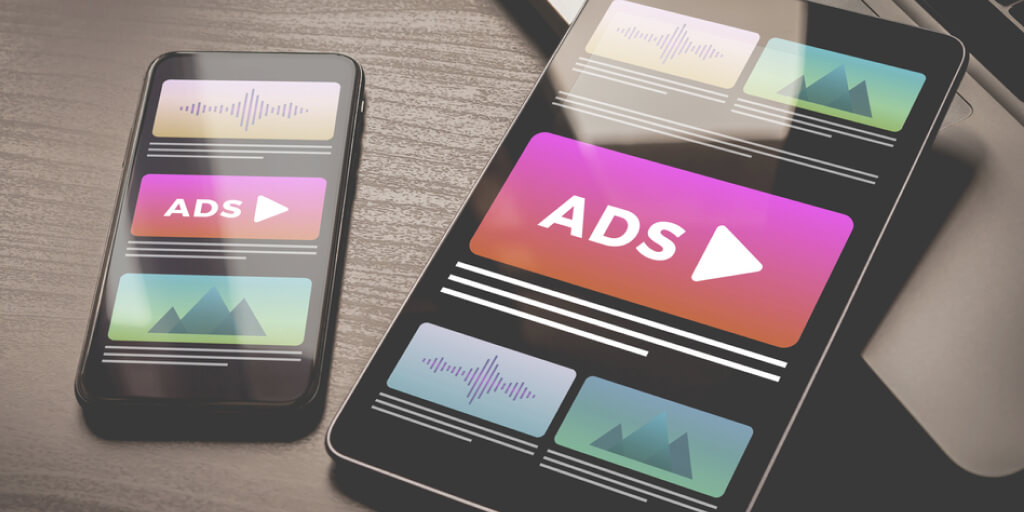So you have decided to embark on the exciting project of building an app. But it would be wise to plan your budget before you fully start the project. It’s easy to get carried away with the most interesting part of designing and developing the app itself. But have you considered that it will all be fruitless if no one gets to find out about it?
So what size marketing budget does it take to bring a new app to market? In truth, the simple answer to this question is ‘it depends’. There is no one-size-fits-all answer to the question, of how you should decide on the marketing budget for a new app.
The amount of money you need to spend on marketing your app depends on various factors, just as the cost to build an app will depend on the mobile app development service that you choose. Much depends on the type of app and who it is intended for. Some app companies spend thousands of dollars on marketing, while others spend millions of dollars on marketing alone.
In this article, we will look at a number of factors that you can consider to get a better idea of how much it will cost to successfully market a new app and how to go about putting that budget into effect.
At Blue Whale Apps we offer a complete mobile application development service. We can help you determine the app’s target market, discover the best marketing channels and help you monitor and adjust your marketing budget. In addition to mobile app development services, we can provide all of the research needed to determine how much the marketing budget for a new app should be. Book your free consultation with one of our experts and we will help you get started.
Market Research
Before launching a new app it is recommended that you conduct some market research. Understanding your app’s target audience will help you choose the best marketing channels to reach them and establish reasonable marketing goals. Your spending choices might also be influenced by your understanding of the price of app development and mobile app development services.
To prevent overspending or underspending on marketing initiatives, it is crucial to develop a thorough marketing budget and plan. Think about the size of your target market, your marketing goals, and the best marketing methods to reach your audience.
You might need to do some market research to identify your target market. Analyzing data from comparable apps, interviewing prospective users, holding focus groups, and researching market trends can all be part of this process.
When establishing marketing goals, think about what you want your marketing efforts to accomplish. Do you want to boost app downloads or user engagement? Do you want to increase leads or brand recognition? You may monitor your progress and make necessary adjustments to your marketing budget by creating clear, quantifiable targets.
Finally, it’s critical to continuously review and modify your marketing budget. You might need to increase your budget to account for shifting market conditions as your app develops and your marketing strategies change. You may maximize your marketing budget and accomplish your objectives by remaining adaptable and attentive to the demands of your app.
Understanding the app’s target market
A good marketing plan requires a thorough understanding of your app’s target market. A target market is the particular consumer demographic that your company is aiming to reach with its product or service promotions. This means identifying the group of users who are most likely to be interested in and benefit from your app.
What issue is your app addressing, or what need is it filling? Who will most likely gain from these characteristics and advantages? Are there any particular demographics or interests that are closely associated with your app’s value proposition?
After you have a general notion of who your target market might be, you can carry out more thorough research to support your presumptions and improve your comprehension. This investigation could involve looking at data from comparable apps, interviewing prospective users, or utilizing social media monitoring tools to keep an eye on topics pertaining to the market or specialty of your app.
Be careful to take into account elements like age, gender, geography, interests, and behavior patterns as you gather data about the intended audience for your app. Gaining a thorough grasp of your target market will enable you to customize your marketing initiatives to meet their wants and preferences and make the most of your marketing budget.
Size and characteristics of the potential market
Knowing your target audience well is crucial before deciding on a marketing budget for your new app. Your marketing strategy, techniques, and spending plan will be influenced by the size and features of your potential market. To determine your target market, it is crucial to undertake market research.
You must figure out how many individuals fulfill the requirements for your app, which may be tailored to a specific age range, gender, or area. This information can be gathered through focus groups, surveys, and internet market research tools.
You must identify the online habits of your target market, the platforms they favor, and the factors that influence their decision to download and utilize an app. You can use this knowledge to create persuasive marketing messages that appeal to your target market.
Understanding your competitors and their share of the market is also crucial. To create a more successful marketing strategy for your app, you can do a competitive study to identify the advantages and disadvantages of your competitors’ marketing tactics.
In conclusion, knowing the size and makeup of your target market is essential to determining your marketing budget for a new app..
How the type of app affects the marketing budget
The type of app you are marketing should be taken into account when deciding on a marketing budget for a new app. Apps of various types could demand various marketing plans and financial investments. For influencer marketing campaigns and in-app promotions, for instance, a gaming app may need a bigger budget to encourage downloads and engagement. A productivity or utility app, on the other hand, could need a bigger budget for content marketing and search engine optimization (SEO) to draw organic traffic and raise brand awareness.
The target demographic and the competition should also be taken into account, in addition to the sort of app. Knowing the competitors may help determine the amount of money required to stay competitive and stand out in the market, while understanding the target demographic can help determine which marketing channels will be most effective.
In the end, there is no one method that works for all situations when deciding the marketing budget for new software. The budget will be determined by a number of variables, including the sort of app, target demographic, level of competition, marketing objectives, and the resources at hand. To achieve the highest potential return on investment, it is crucial to adopt a data-driven strategy and continuously analyze and change the budget based on the effectiveness of marketing initiatives.
Design Your Marketing Funnel
Once you have a firm grasp of your target market, the route your potential consumer takes from first learning about your app to actually making a purchase is known as a marketing funnel.
Your funnel should have distinct phases that correspond to your marketing goals.
Potential clients initially learn about your app at this step of the funnel, called awareness. This can happen through various channels, such as social media, paid ads, or content marketing.
Potential clients demonstrate interest in your app during this stage by visiting your website or installing it. They may not be prepared to buy just yet, but they are demonstrating an interest in finding out more about your software.
Decision: At this point, potential customers have made up their minds about whether or not to buy your app. To reach a final conclusion, they might require further information or social support.
Action: This is the step of your funnel where potential buyers actually buy your app.
The primary metrics you will use to gauge performance should be identified, along with a flowchart of each level of your funnel. This can assist you in determining where potential clients stall out and where your marketing efforts should be concentrated.
You can make sure you are targeting the correct audience, guiding them through the purchasing process, and finally turning them into paying customers by establishing your marketing funnel.
Evaluate customer behavior
Following the setup of your marketing funnel, it is critical to assess consumer behavior. This enables you to assess whether the funnel is performing as planned and whether there are any areas that may be improved.
Monitoring metrics like click-through rates, conversion rates, and bounce rates is one technique to assess consumer behavior. These analytics can give you information about how customers are using your marketing funnel and where they might be losing interest.
To comprehend your customers’ preferences and problems, you can also employ surveys and consumer feedback. This might assist you in customizing your marketing messaging and enhancing the client experience.
Also, by looking at customer activity, you can spot patterns and trends like peak app download periods or social media channels with significant interaction. Your marketing strategy and financial planning can be guided by this information.
Ultimately, analyzing consumer behavior is a continual process that necessitates ongoing observation and correction. You may improve your marketing funnel and raise your chances of success in the cutthroat app industry by doing this.
Account For Other Operating Costs
When deciding on a marketing budget for your new app, it is important to account for other operating costs as well. These costs may include salaries for employees, rent for office space, and other expenses related to running the business
To determine your marketing budget, you should consider your overall budget and the percentage of it that you can allocate to marketing. It is important to strike a balance between investing in marketing and ensuring that you have enough funds to cover other operating costs.
One way to determine your marketing budget is to use a percentage of your projected revenue. The percentage may vary depending on factors such as the size of your company and the industry you are in. Some experts recommend setting aside 10-20% of your revenue for marketing, while others suggest a higher percentage for startups and newer companies.
Another approach is to calculate your customer acquisition cost (CAC), which is the cost to acquire one customer. This can help you determine how much you can afford to spend on marketing to acquire new customers while still maintaining profitability.
Overall, when deciding on a marketing budget for your new app, it is important to consider not only the marketing costs but also other operating costs to ensure the long-term success of your business.
Identify The Most Profitable Marketing Channels
Identifying the most profitable marketing channels is crucial to ensuring that you allocate your marketing budget effectively. You want to focus your resources on the channels that will give you the highest return on investment (ROI) and help you achieve your marketing goals. Here are some steps to follow to identify the most profitable marketing channels:
Conduct market research: Research your target market to understand where they spend their time online and what channels they use to discover new apps. This will give you insight into which channels are most likely to be profitable.
Analyze competitors: Study your competitors to see which marketing channels they are using and what seems to be working for them. You can use this information to inform your own marketing strategy.
Experiment with different channels: Test different marketing channels to see which ones generate the most leads and conversions. Be sure to track your results carefully so you can compare the ROI of each channel.
Use analytics: Use analytics tools to track your website traffic, leads, and conversions. This data will help you evaluate the effectiveness of each marketing channel and make informed decisions about where to allocate your marketing budget.
Optimize your strategy: Once you have identified the most profitable marketing channels, optimize your strategy to focus on these channels. This may involve reallocating your marketing budget or changing your messaging and creative to better resonate with your target audience on these channels.
Remember that the most profitable marketing channels may vary depending on your target market, industry, and other factors. Be prepared to adjust your strategy as you learn more about what works best for your app.
Social Media Promotion
Any app marketing strategy must include social media marketing since it offers a practical approach for connecting with potential users, building brand awareness, and interacting with current users. Finding the ideal social media sites for the app’s intended users and developing a social media strategy that works with those objectives are crucial.
Here are some pointers for promoting your new app on social media:
Identify which social media channels are most used by your target demographic, and adjust your plan accordingly.
Use social media advertising: Paid social media ads can be more cost-effective than conventional advertising channels and are often highly targeted to reach particular groups.
Observe and evaluate outcomes: To monitor the success of your social media marketing activities, use analytics tools. This will enable you to determine what is effective and what needs to be improved.
You can create a strong online presence and increase user acquisition and retention for your app by integrating social media marketing into your entire marketing strategy.
App Promotion Assets Costs
The resources and content produced to advertise an app are referred to as “app promotion assets.” Examples include graphics, videos, screenshots, app descriptions, and more. These resources are essential for attracting potential customers and persuading them to download and utilize the app. High-quality promotional materials can be expensive to produce, though.
Depending on a number of variables, including the complexity of the app, the platform it is targeting, and the specific assets needed, the cost of generating app promotion materials can vary significantly. A simple app teaser video, for instance, might simply cost a few hundred dollars to produce, whereas a more elaborate video with voiceover work and 3D animations might cost several thousand.
Effective app advertising also requires other promotional elements like graphics, pictures, and app descriptions in addition to video content. These materials can be produced internally or contracted out to a skilled copywriter or designer. The cost of hiring professionals may be higher, but they can guarantee better work and possibly better outcomes.
The continuous expenses related to app advertising materials, such as changing screenshots and app descriptions to reflect changes to the app, must also be taken into account. These continuing expenses should be included in the total app marketing budget because they might accumulate over time.
Even if there may be a cost associated with app advertising assets, their importance and potential impact on the app’s success cannot be overstated. Because of this, it’s crucial for app developers and marketers to carefully weigh the advantages and disadvantages of producing high-quality app promotion assets as a part of their entire marketing plan.
Viral Marketing
The goal of viral marketing is to generate buzz about a product or service by developing content or messages that are likely to be shared quickly and extensively by a large number of people. The foundation of this technique is the notion that informal recommendations from friends and family outperform conventional advertising.
The fact that viral marketing may assist in raising brand awareness and reaching a broader audience for relatively less money is one of its most important advantages. Viral campaigns have the potential to quickly spread over blogs, social media platforms, and other online channels, giving a brand free exposure and traffic.
A great viral campaign might be difficult to create, though. It necessitates a thorough comprehension of the target audience and the kind of content that would appeal to them. The material must be fascinating, shareable, and engaging, and it must be presented so that it is easy for users to share it with their followers and friends.
Ultimately, viral marketing can be an excellent method for promoting an app, but it must be used carefully and intelligently to be successful and consistent with the brand’s objectives and values.
Influencer Marketing
Influencer marketing can be a very powerful tool for promoting your new app and expanding its user base. Social media users with a sizable and active following on sites like Instagram, Twitter, or YouTube are known as “influencers.” You can tap into their audience and potentially attract new users for your app by collaborating with influencers in your industry or niche.
The size, scope, and degree of engagement of an influencer’s audience should all be taken into account when setting an influencer marketing budget. Find influencers who have a genuine interest in your app and whose followers fit your target audience.
Always keep in mind that influencer marketing can be costly, particularly if you’re dealing with an established influencer who has a sizable fan base. If you’re ready to collaborate with micro-influencers, who could have smaller followings but better engagement rates, even a modest investment can go a long way.
When working with influencers, make sure to spell out your objectives and expectations in detail. Next, collaborate with them to design a unique and genuine campaign that appeals to their audience. This can include paid advertisements, product placements in their content, reviews, giveaways, and sponsored posts.
In conclusion, influencer marketing can be a significant part of your overall marketing plan, but in order to get the best results for your app, it’s critical to approach it intelligently and strategically.
The timeline
Setting up a schedule for your app marketing budget is crucial for remaining on course and making sure your resources are used wisely. The calendar for your marketing campaign, including pre-launch activities and post-launch initiatives, should include all significant deadlines and milestones.
You should start creating hype and expectation among your target audience before releasing your software. This can be setting up a landing page or website, holding a giveaway or competition prior to launch, or starting to establish a social media presence.
After your app is released, you should concentrate on gaining and keeping users. This could entail launching paid advertising campaigns, improving the searchability of your app store listings, or putting an app store optimization plan into practice to boost exposure and downloads.
You might also want to prepare for seasonal or event-based promotions, like holiday discounts or limited-time deals, in addition to these continuing marketing initiatives.
How to compare Your Marketing Budget With Other Mobile Apps
You can evaluate the success of your marketing initiatives and make sure that your resource allocation is efficient by comparing your marketing budget with that of other mobile apps in your sector or specialty. To compare your marketing expenditure to that of other mobile apps, follow these steps:
Start by investigating the industry benchmarks for marketing expenditure in the specific app category. This can help you get a feel of what your competitors are spending and show you where your budget might need to be adjusted.
Investigate your rivals: Have a look at the marketing tactics and platforms used by your rivals. Do they place a lot of emphasis on influencer marketing, social media advertising, or other strategies? This might help you identify what is successful in your field and point out opportunities for development.
Keep track of important metrics like customer lifetime value (CLV), cost per install (CPI), and user acquisition cost (UAC) to determine how your marketing budget is performing in comparison to other apps in your sector. This might assist you in locating areas where your budget or approach may need to be modified.
Iterate based on what works best for your app and audience, and don’t be scared to experiment with various marketing channels and strategies. To make sure you’re getting the most out of your budget, continually test and improve your marketing plan.
KPIs
Key performance indicators (KPIs) are vital measures that let you assess the efficacy of your mobile app marketing campaigns. You may learn a lot about the efficacy of your marketing plan and spot places where you might need to change your approach by monitoring and evaluating KPIs.
When assessing the performance of your mobile app marketing budget, take into account the following KPIs:
User Acquisition Cost (UAC): UAC calculates how much it costs to add a new user to your app. It is calculated by dividing your overall marketing budget by the number of new consumers you added over a specific time frame. This indicator can show you how effective your marketing channels and campaigns are and show you where your budget might need to be adjusted.
Cost per Install (CPI) is a metric for determining how much it costs to get a new install of your app. It is measured by dividing your overall marketing expenditure by the volume of installed apps during a specific time period. By using this metric, you can determine which channels are the most economical for bringing in new customers and adjust your marketing budget accordingly.
Retention Rate: The percentage of users who keep using your app over time is measured by retention rate. By monitoring retention rates, you can determine how well your app’s user experience works and spot any areas where engagement and retention could use some improvement.
Pre-launch cost to build an app
A successful app launch needs careful planning and execution of the pre-launch costs. These costs are incurred prior to the release of your app and are essential to increasing interest and awareness among your target market. These are a few pre-launch expenses to think about:
Creating a high-caliber app necessitates a large investment in design, development, and testing. Depending on the complexity and functionality of your program, this price can vary significantly.
Market research: Understanding your target audience and seeing growth prospects may require you to conduct market research, Surveys, focus groups, and other research techniques can fall under this category.
App Store Optimization (ASO) is the process of improving your program’s exposure and discoverability on app stores by optimizing its title, description, keywords, and other metadata. This may entail investing in technologies to enhance your app’s listing or engaging an ASO consultant.
Creation of a landing page or website: Creating a landing page or website to advertise your app will help to increase interest and awareness among your target market. Costs for design and development, as well as ongoing upkeep and updates, may be included.
Having a social media presence can help you interact with your target market and advertise your app prior to launch. This may involve spending money on producing and promoting content for social media.
Influencer Marketing: Collaborating with influencers can increase your audience reach and generate buzz for your app. Fees for influencers as well as expenses for producing and advertising content may be involved.
You can create a solid foundation for your app launch and create the conditions for long-term development and success by carefully assessing these pre-launch costs and properly managing your resources.
How much is spent on app marketing?
The US spent $14.2 billion on app marketers in 2019 and is expected to spend $27.5 billion by the end of the year, placing North America in second place on the app install spend leaderboard. In order to increase app installs, European app marketers are estimated to spend $22.9 billion this year, up from their $10.6 billion investment in 2019.”
Conclusion
Finally, figuring out a marketing budget for a new app can be difficult. It necessitates rigorous preparation, investigation, and analysis of numerous elements, including corporate objectives, target markets, and competitors. But, by following the instructions provided in this blog, you can develop a budget that is practical and in line with the requirements and available resources for your app.
Before anything else, decide what the objectives of your app are and what marketing strategies will help you get there. Next, conduct market research to determine the typical cost per acquisition and contrast your spending plan with that of your rivals. Secondly, arrange your budget in accordance with the many marketing outlets you have at your disposal. Monitoring your key performance indicators (KPIs) can also assist you in determining the efficacy of your marketing initiatives and future budget modifications.
Do not forget that creating a marketing budget is a continuous process. You may need to review and modify your budget as your app develops and the market shifts. You may develop a budget that supports the expansion and success of your new app by remaining knowledgeable and adaptable.
How we can help
At Blue Whale Apps, we offer a complete mobile application development service. We can help you determine the app’s target market, discover the best marketing channels, and help you monitor and adjust your marketing budget. In addition to mobile app development services, we can provide all of the research needed to determine how much the marketing budget for a new app should be. Book your free consultation with one of our experts, and we will help you get started.






